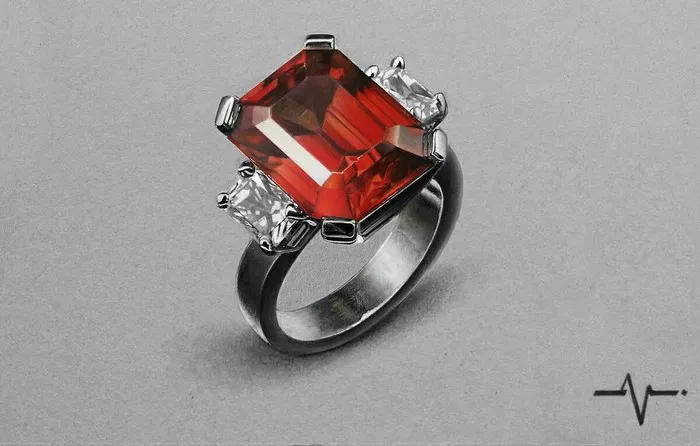Choosing an engagement ring is a significant decision, and one of the key factors to consider is the carat weight of the diamond or gemstone. Carat weight not only affects the size and appearance of the ring but also plays a role in its cost and overall value. This article explores the factors that influence the choice of carat weight for engagement rings, common trends in the jewelry industry, and considerations for selecting the right carat weight based on personal preferences, budget, and style.
Introduction to Carat Weight in Engagement Rings
Carat is a unit of weight used to measure gemstones, with one carat equaling 200 milligrams. In the context of engagement rings, carat weight refers specifically to the weight of the diamond or gemstone set in the ring. While carat weight is a crucial consideration, it is just one of the “Four Cs” of diamonds, alongside cut, color, and clarity, that determine the overall quality and value of a diamond.
Historical Perspective and Cultural Influences
The significance of carat weight in engagement rings has evolved over time and varies across cultures:
Historical Context: Engagement rings with larger gemstones have historically been associated with wealth and status, symbolizing commitment and love.
Cultural Influences: Different cultures have varying preferences regarding carat weight, with some emphasizing size as a status symbol, while others prioritize quality and craftsmanship.
See Also: Are Yellow Gold Engagement Rings Tacky?
Factors Influencing Carat Weight Choices
Several factors influence the choice of carat weight for an engagement ring:
Budget: Carat weight significantly impacts the cost of an engagement ring. Larger carat weights generally command higher prices due to their rarity and demand.
Personal Preferences: Individual preferences vary regarding the size and prominence of the center stone. Some prefer larger stones for a more dramatic appearance, while others prioritize quality over size.
Hand Size: The size of the wearer’s hand can influence the perceived size of the stone. Smaller hands may appear overwhelmed by very large stones, while larger stones can complement larger hands.
Common Carat Weights and Trends
While preferences can vary widely, certain carat weights are more commonly chosen for engagement rings:
0.50 to 1.00 Carats: This range is among the most popular for engagement rings. A half-carat to one-carat diamond strikes a balance between size and cost, appealing to many buyers looking for a substantial yet affordable option.
1.00 to 1.50 Carats: Diamonds in this range are considered medium to slightly larger sizes. They offer a noticeable presence on the finger without reaching the higher price points associated with larger carat weights.
1.50 to 2.00 Carats: This range is popular for those seeking a more substantial and impressive appearance. Diamonds in this range are often chosen for their size and impact.
Above 2.00 Carats: Larger carat weights, such as 2.00 carats and above, are less common but highly desired for their luxurious look and statement-making presence. They are typically chosen for special occasions or by those with higher budgets.
Considerations for Choosing the Right Carat Weight
When selecting the carat weight for an engagement ring, consider the following factors:
Budget Constraints: Determine your budget and prioritize qualities such as cut, color, and clarity alongside carat weight to find the best value within your price range.
Quality over Size: If quality is more important than size, consider choosing a smaller carat weight with higher cut and clarity grades for maximum brilliance and sparkle.
Style and Setting: Consider the style and setting of the ring. Certain settings, such as halo or pavé designs, can enhance the appearance of the center stone, making it appear larger and more brilliant.
Trends in Engagement Rings
Current trends in engagement rings reflect a blend of tradition and personalization:
Customization: Increasingly, couples are opting for customized rings that reflect their unique styles and preferences, including choice of carat weight.
Vintage and Antique Styles: Vintage and antique engagement rings, often featuring intricate designs and unique gemstone cuts, continue to be popular choices.
Care and Maintenance Tips
Once you’ve chosen an engagement ring, follow these tips to care for it and maintain its beauty:
Regular Cleaning: Clean your ring regularly using a soft brush, mild soap, and warm water to remove dirt and oils that can dull its appearance.
Professional Inspections: Schedule regular inspections with a jeweler to check for loose stones, worn prongs, or other issues that could affect the ring’s integrity.
Insurance: Consider insuring your engagement ring against loss, theft, or damage to protect your investment and sentimental value.
Conclusion
The choice of carat weight for an engagement ring is a personal decision influenced by budget, preferences, and cultural influences. Whether you opt for a classic one-carat diamond or a larger, more extravagant stone, understanding the factors that influence carat weight choices can help you make an informed decision. By considering your priorities, consulting with a reputable jeweler, and exploring various options, you can select an engagement ring that not only fits your style and budget but also symbolizes your commitment and love for years to come.

